So much has been made of the fires still raging in Los Angeles that you may not have heard about the unrelated fire that broke out last Thursday (January 16) at the Moss Landing battery plant, located near San Francisco.
Moss Landing is one of the largest battery storage sites in the world, with tens of thousands of lithium-ion batteries. This and similar sites provide important energy storage services in California, which is one of the biggest US producers of renewable solar and wind power. It is unclear at this time what caused the fire.
Even though the fire started only a few days ago, I have already seen many articles by opponents of renewable energy claiming that this fire represents yet one more demonstration of why a renewable energy/battery storage strategy could never be effective. Other articles have pointed to incidents of electric vehicles exploding and to defective wind turbines to support this same narrative.
What should we make of these incidents? And what do they mean about the viability of renewable resources and batteries? Before I answer this question, let me first ask a question or two more.
First, what should we think about the nuclear power plant accidents at Three Mile Island, Chernobyl, and Fukushima?
Three Mile Island
Chernobyl
Fukushima
Each of these accidents resulted in the release of radiation from the reactors. Luckily, in each case the releases ultimately were stopped, but in each case the potential damage could have been catastrophic, and very nearly was at Chernobyl.
What should we think about explosions from leaks of natural gas?
According to a Public Interest Research Group Study, there were 328 such explosions from 2010 to the end of 2021, or about 30 each year.
What should we think about fires in gasoline-fueled cars?
A study by the National Fire Protection Association shows an estimated annual average of 215,096 vehicle fires in the United States from 2018–2022. This study does not differentiate between fires in gasoline fueled cars and electric vehicles, but other data indicates that there are significantly more car fires in gasoline fueled vehicles than electric vehi
What should we think about refinery fires?
Refinery fires can be difficult to extinguish, and they release dangerous toxic gases.
What should we think about the Exxon Valdez and multitude of other oil spills?
Oil spills are ecological disasters.
Collectively, these incidents, including the Moss Landing fire, should make us realize that producing, transporting, storing, and consuming every form of energy can be dangerous and environmentally disruptive when we are not careful. We should not minimize the potential dangers associated with any of the forms of energy we use to power the grid, or otherwise. This applies to advocates of renewable energy, but also to the advocates of nuclear power, fossil fuels, and other sources of energy. If you want to point fingers at energy sources based on accidents caused by the use of those sources, then you must point your finger at every energy source.
It is important not to fall into the trap of letting anecdotal evidence, particularly evidence supported by dramatic photos and videos like the ones I have provided in this post, to substitute for careful analysis of those accidents to evaluate their safety. If we were to shut down the uses of energy sources based on the spectacular accidents that sometimes have occurred from their use, we would all soon be back to living in caves in a hunter-gatherer society. Rather, we should learn the lessons that can be learned from those accidents and apply them to make the use of every form of energy safer and less harmful to the environment. I believe that this in fact has happened, which is why, for example, nuclear nuclear reactors are safer now than before the Three Mile Island, Chernobyl, and Fukushima accidents.
So, what we should think about the Moss Landing fire is that it demonstrates the potential danger of placing large numbers of lithium-ion batteries together in one facility. And maybe this will help renewable energy advocates get off their high horse and realize that there are safety and environmental issues associated with renewable resources and batteries that must be taken seriously and not brushed aside. But we should not conclude from Moss Landing that renewable resources can never play an important role in supplying energy to the grid. Wind, solar, and battery technologies are still relatively new technologies when applied on the large scale at which they currently are being employed. There is every reason to believe that, just as innovation is likely to make these technologies more efficient and less expensive, lessons learned from accidents will make them safer and less prone to accident.
I hope you enjoyed this post. I enjoy writing them and will never charge for subscriptions or ask for donations. I only ask that, if you did enjoy it, you press the “like” button below. Doing so will help me evaluate interest in the book I am writing on grid operations. Of course, if you have a reaction to, or question about, this post, please leave a comment and I will be happy to respond.

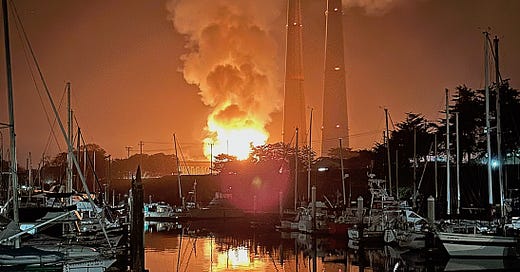





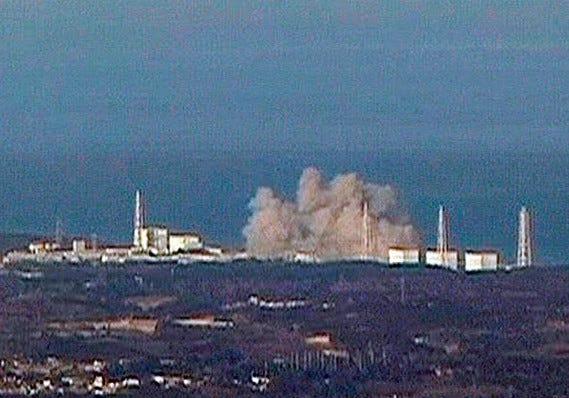


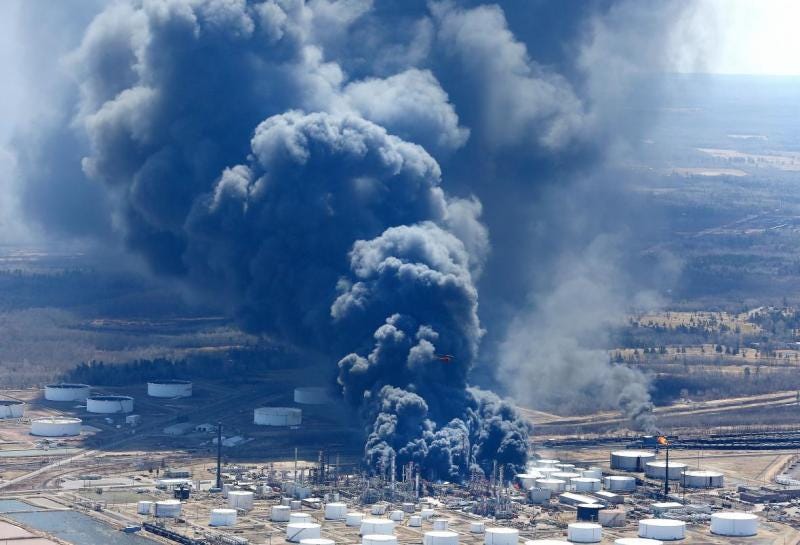
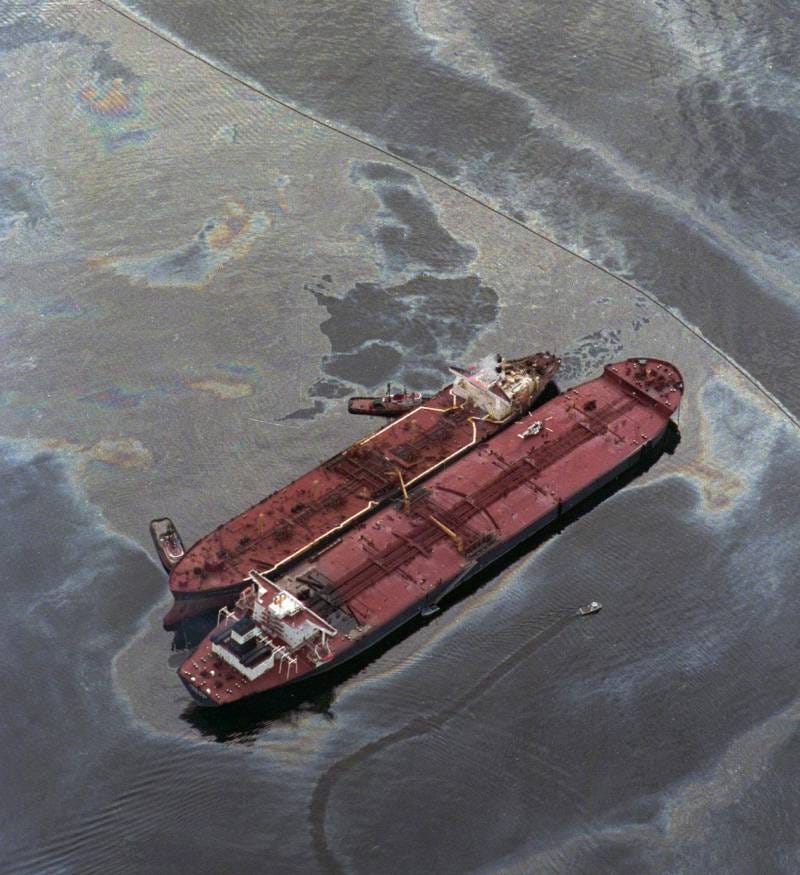
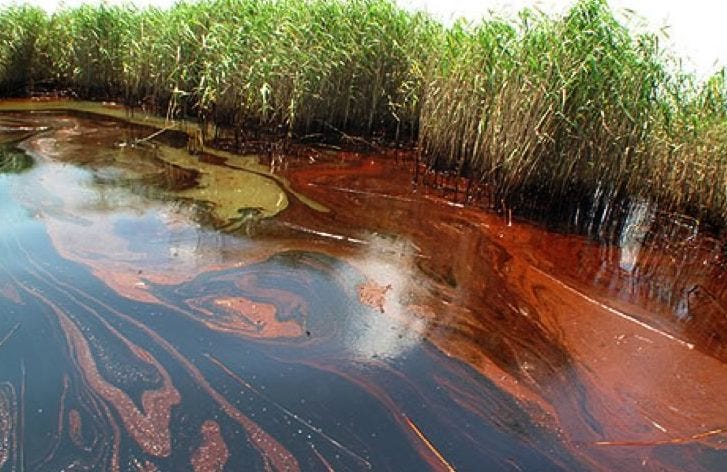
Good thinking, leading to "How should we evaluate our energy sources?"
1. Sufficiently ample?
2. Cost per unit of energy?
3. Power available when needed?
4. Observed harm to human life and health?
5. Pollution of the environment?
6. CO2 emissions?
7. Consumption of finite natural resources?
8. Security of supply and supply chain?
9. Support to national security?
Answer: a thoughtful combination of above, no single issue.
In each case you are discussing things where we have decades of experience and tens of thousands of hours of safe operation. Nuclear reactors have millions of hours of safe operation under their belt. Oil tankers have millions of miles of safe voyages. Utility scale batteries are all of 5 years old. We have already seen devastating fires - At Moss landing there have been THREE previous fires.
I agree that there is a problem, but what is it? It's actually easy to explain, if I may.
In the case of oil tankers, there are a grand total of 810 in the world. Nuclear reactors? 94 in the U.S. The batteries, as a whole are not failing. It is the individual cells that are failing. When a single cell fails catastrophically, it sets off a chain reaction. Hence a correct comparison is not between the number of installations, but in the number of individual batteries, just like individual ships, and individual reactors.
The battery installations consist of millions of cells. A single manufacturing defect, in a single cell, can cause a loss of the whole facility. Such a defect is almost impossible to detect.
If we had 10 million nuclear reactors, or 10 million oil tankers, I'd expect our failure rate to be more significant. The real problem is what I like to call the tyranny of large numbers. With a big enough pile of cells, you are going to have fires - you can't stop it from happening. Even small failure rates translate into a large number of fires.
The solution is to ditch lithium-ion cells for this purpose. You need batteries that are inherently safe - likely flow cell batteries, or solid-state batteries. Or set up an energy system where you are not trying to store so much energy - it's a pretty stupid starting point for running a utility. energy doesn't want to be stored. It's why, for the last 120 years, we have not stored very much of it. Power systems learned this back in the days of Edison. Look up flywheel storage accidents sometime. Extremely reliable energy storage, and very dangerous when it fails.